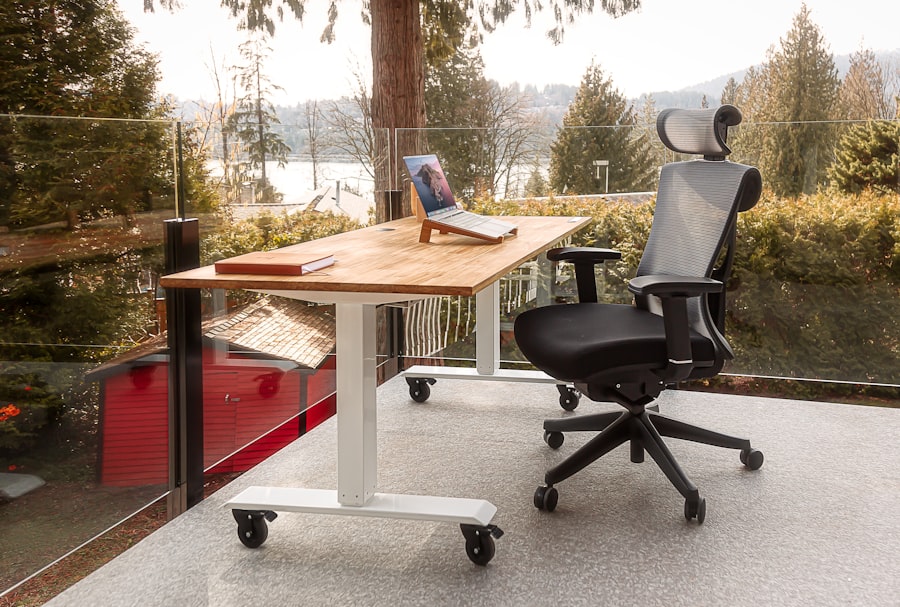In the modern workplace, the significance of office furniture cannot be overstated. An upgrade in office furniture is not merely a matter of aesthetics; it plays a crucial role in enhancing productivity, employee satisfaction, and overall workplace morale. As businesses evolve, so do their needs, and the furniture that once served its purpose may no longer meet the demands of a dynamic work environment.
An office furniture upgrade can transform a mundane workspace into an inspiring and functional area that fosters creativity and collaboration. The decision to upgrade office furniture often stems from various factors, including changes in company culture, the introduction of new technologies, or simply the desire to create a more inviting atmosphere. For instance, with the rise of remote work and flexible office arrangements, many companies are rethinking their layouts and furniture choices to accommodate collaborative spaces and quiet zones.
This shift necessitates a careful evaluation of existing furniture and a strategic approach to selecting new pieces that align with the company’s vision and operational needs.
Key Takeaways
- Upgrading office furniture can improve the overall look and functionality of your workspace, leading to increased productivity and employee satisfaction.
- When choosing office furniture, consider the size and layout of your office space, as well as the specific needs of your employees and the nature of your business.
- Stylish and functional office furniture can enhance the professional image of your business, create a positive work environment, and impress clients and visitors.
- To create a productive and stylish office environment, consider factors such as lighting, color scheme, organization, and the use of ergonomic furniture.
- Incorporating ergonomic furniture into your office design can improve employee health and comfort, leading to increased productivity and reduced risk of injury.
Choosing the Right Furniture for Your Office Space
Assessing the Available Space
The first step in choosing the right furniture is to assess the available space, taking into account factors such as layout, natural light, and traffic flow. For example, an open-plan office may benefit from modular furniture that can be easily reconfigured to support teamwork or individual tasks.
Considering the Needs of Employees
Beyond spatial considerations, it is essential to consider the specific needs of employees who will be using the furniture. Different roles may require different types of workstations; for instance, creative teams might thrive in collaborative spaces with communal tables, while finance departments may need more private desks for concentration.
Incorporating Technology into Furniture Choices
Additionally, incorporating technology into furniture choices is vital. Desks equipped with built-in power outlets and cable management systems can help maintain a tidy workspace while ensuring that employees have easy access to necessary tools.
Benefits of Stylish and Functional Office Furniture

Investing in stylish and functional office furniture yields numerous benefits that extend beyond mere aesthetics. A well-designed workspace can significantly enhance employee morale and productivity. Research has shown that employees who work in environments that are visually appealing and ergonomically designed tend to be more engaged and motivated.
For instance, incorporating vibrant colors or unique design elements can create an energizing atmosphere that inspires creativity and innovation. Moreover, functional furniture contributes to improved workflow and efficiency. Desks with adjustable heights allow employees to alternate between sitting and standing, promoting better posture and reducing fatigue.
Additionally, storage solutions such as shelving units or filing cabinets help keep workspaces organized, minimizing distractions and enabling employees to focus on their tasks. The combination of style and functionality not only elevates the overall aesthetic of the office but also creates an environment conducive to high performance.
Tips for Creating a Productive and Stylish Office Environment
Creating a productive and stylish office environment requires a thoughtful approach that balances aesthetics with functionality. One effective strategy is to incorporate biophilic design elements, which connect employees with nature through the use of plants, natural light, and organic materials. Studies have shown that exposure to greenery can reduce stress levels and enhance cognitive function, making it an excellent addition to any workspace.
Another important aspect is the arrangement of furniture to promote collaboration while maintaining personal space. Open seating arrangements can encourage teamwork, but it is equally important to provide areas where employees can retreat for focused work. Utilizing movable partitions or acoustic panels can help create semi-private spaces without sacrificing openness.
Additionally, integrating technology seamlessly into the design—such as wireless charging stations or integrated audiovisual systems—can enhance both functionality and style.
How to Incorporate Ergonomic Furniture into Your Office Design
The integration of ergonomic furniture into office design is essential for promoting employee health and well-being. Ergonomics focuses on creating workspaces that fit the physical needs of individuals, thereby reducing discomfort and preventing injuries associated with prolonged sitting or repetitive motions. When selecting ergonomic furniture, it is crucial to consider adjustable chairs that provide lumbar support, desks that allow for height adjustments, and accessories like keyboard trays that promote proper wrist alignment.
Incorporating ergonomic principles into office design also involves educating employees about best practices for workstation setup. Providing training sessions on how to adjust chairs and desks correctly can empower employees to take charge of their comfort. Furthermore, creating a culture that encourages regular movement—such as standing meetings or walking breaks—can complement ergonomic furniture choices by promoting an active lifestyle within the workplace.
Customizing Your Office Furniture to Reflect Your Brand

Communicating Values and Culture
For instance, a tech startup may opt for sleek, modern furniture with vibrant colors to convey innovation and creativity, while a law firm might choose classic wood finishes and neutral tones to project professionalism and stability.
Enhancing Functionality
In addition to aesthetics, customization can also enhance functionality tailored to specific business needs. Companies can work with manufacturers to create bespoke solutions that address unique challenges within their workspace. For example, custom-built conference tables equipped with integrated technology can facilitate seamless presentations and meetings.
Aligning Furniture with Brand Identity
By aligning furniture choices with brand identity, organizations can create an environment that resonates with their mission while enhancing employee engagement.
Budget-Friendly Options for Office Furniture Upgrades
Upgrading office furniture does not have to break the bank; there are numerous budget-friendly options available that do not compromise on quality or style. One approach is to explore pre-owned or refurbished furniture, which can offer significant savings while still providing durable solutions. Many companies specialize in refurbishing used office furniture, giving it a new lease on life while reducing waste.
Another cost-effective strategy is to prioritize essential pieces first before gradually upgrading other areas of the office. For instance, investing in high-quality ergonomic chairs may yield immediate benefits in employee comfort and productivity, while other elements like decorative items or additional storage can be addressed later as budget allows. Additionally, considering modular furniture options can provide flexibility; these pieces can be reconfigured as needs change without requiring a complete overhaul.
Maintenance and Care for Your New Office Furniture
Once new office furniture has been acquired, proper maintenance is essential to ensure its longevity and continued functionality. Regular cleaning routines should be established based on the materials used; for example, wooden surfaces may require specific cleaning products to avoid damage, while fabric upholstery might need periodic vacuuming or professional cleaning services. Establishing guidelines for care can help maintain the appearance of furniture over time.
Furthermore, periodic inspections should be conducted to identify any wear or damage early on. Addressing issues such as loose screws or scratches promptly can prevent more significant problems down the line. Encouraging employees to take responsibility for their workspaces by keeping them organized and clean can also contribute to the overall maintenance of office furniture.
By fostering a culture of care within the workplace, organizations can ensure that their investment in new furniture continues to pay dividends in terms of aesthetics and functionality for years to come.
If you are looking to shop for office furniture, you may want to check out this article on modern office interior. This article provides insights on how to create a modern and stylish workspace that enhances productivity and creativity. Additionally, you may also find this article on effective workspace design helpful in choosing the right furniture pieces that will optimize your office layout. For those specifically located in Dubai, you can explore this article on office interiors in Dubai to discover local options for furnishing your office space.
FAQs
What are the different types of office furniture available for purchase?
There are various types of office furniture available for purchase, including desks, chairs, filing cabinets, bookcases, conference tables, reception furniture, and storage units.
What materials are commonly used in office furniture?
Office furniture is commonly made from materials such as wood, metal, glass, and plastic. Each material has its own unique characteristics and benefits.
What factors should be considered when shopping for office furniture?
When shopping for office furniture, it’s important to consider factors such as the size and layout of the office space, the functionality and comfort of the furniture, the overall design and aesthetic, and the budget.
Where can I purchase office furniture?
Office furniture can be purchased from a variety of sources, including furniture stores, office supply stores, online retailers, and specialty office furniture dealers. It’s important to research and compare options to find the best fit for your needs.
What are some popular styles of office furniture?
Popular styles of office furniture include modern, traditional, contemporary, industrial, and minimalist. Each style offers a different look and feel to suit various office environments and preferences.


